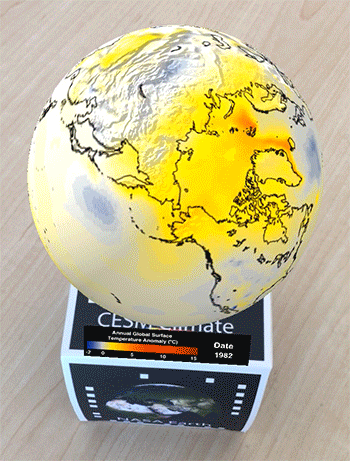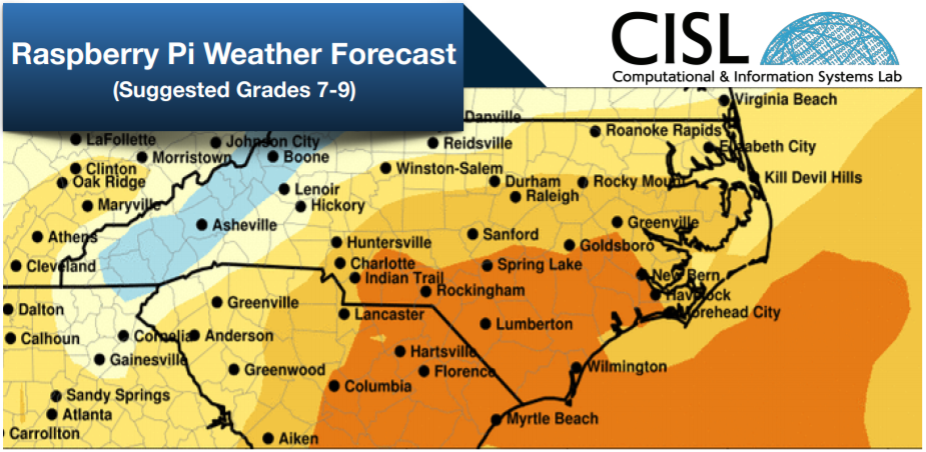Resources for educators and students
Learning resources
We provide educators, students, and the public with educational tools that teach about the importance of high-performance computing (HPC) in our pursuit of answering questions about our world. These open-source learning opportunities aid in the diversification of our science community by making HPC accessible and fun.
Are you an NCAR scientist who would like one of your projects to be featured as open-source educational material on our site? Reach out to outreach@ucar.edu for more information.
NCAR-Wyoming Supercomputing Center
Visit the NCAR-Wyoming Supercomputing Center (NWSC) to learn about the power of supercomputing and how we use it.
See NWSC Visitor Center for how to schedule a visit or virtual tour.
Meteo AR / Meteo VR

Meteo AR is an augmented reality application that displays interactive virtual objects, in this case an animated globe.
Meteo AR is an augmented reality (AR) application (download here) that displays interactive virtual objects – like an animated globe or a hurricane, for example – over real world imagery that is captured by your mobile device's camera.
The app works with the NCAR “science cube” or the downloadable science sheets. They include background information about topics like El Niño, hurricanes, and climate change to help you understand and interpret what you are seeing.
Meteo VR is a virtual reality (VR) application that works with inexpensive devices like Google Cardboard to turn your mobile phone into a 3D VR platform for exploring geoscience data. Google Cardboard is available for purchase from many online retailers. Search “Google Cardboard.”
Raspberry Pi Weather Forecast
Also known as WRF on Pi, the goal of this project is to run a real weather model on your Raspberry Pi computer and make a weather forecast. You will run the simulation for the days you want, where you want, visualize the output, and make a forecast.
By working through this module, you will gain an understanding of how a weather forecast is made, how a meteorologist adds “value” to the forecast, and you will learn some of the limits and shortcomings of some of our latest weather models. Get instructions here.

Machine learning and deep learning
These resources are appropriate for high school learners and other who have some coding experience.
Machine Learning in Python for Environmental Science Problems
Want to learn more about machine learning in Python? This AMS short course shows you everything you need to know with both CPU-enabled and GPU-enabled approaches.
Deep Learning Tutorial
This tutorial is about using deep neural networks to predict intense rotation near the surface of thunderstorms.
Additional resources
Check out the Learning Center and the CISL YouTube channel for a variety of programming tutorials, seminars, and other HPC learning materials.